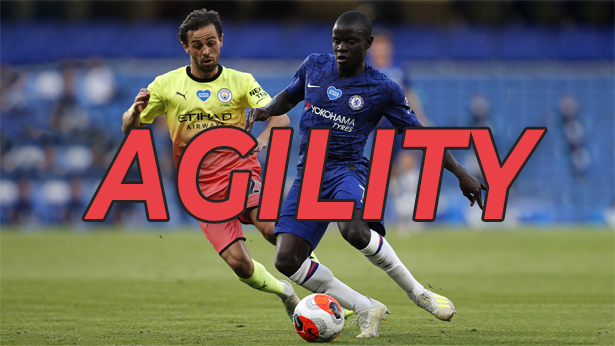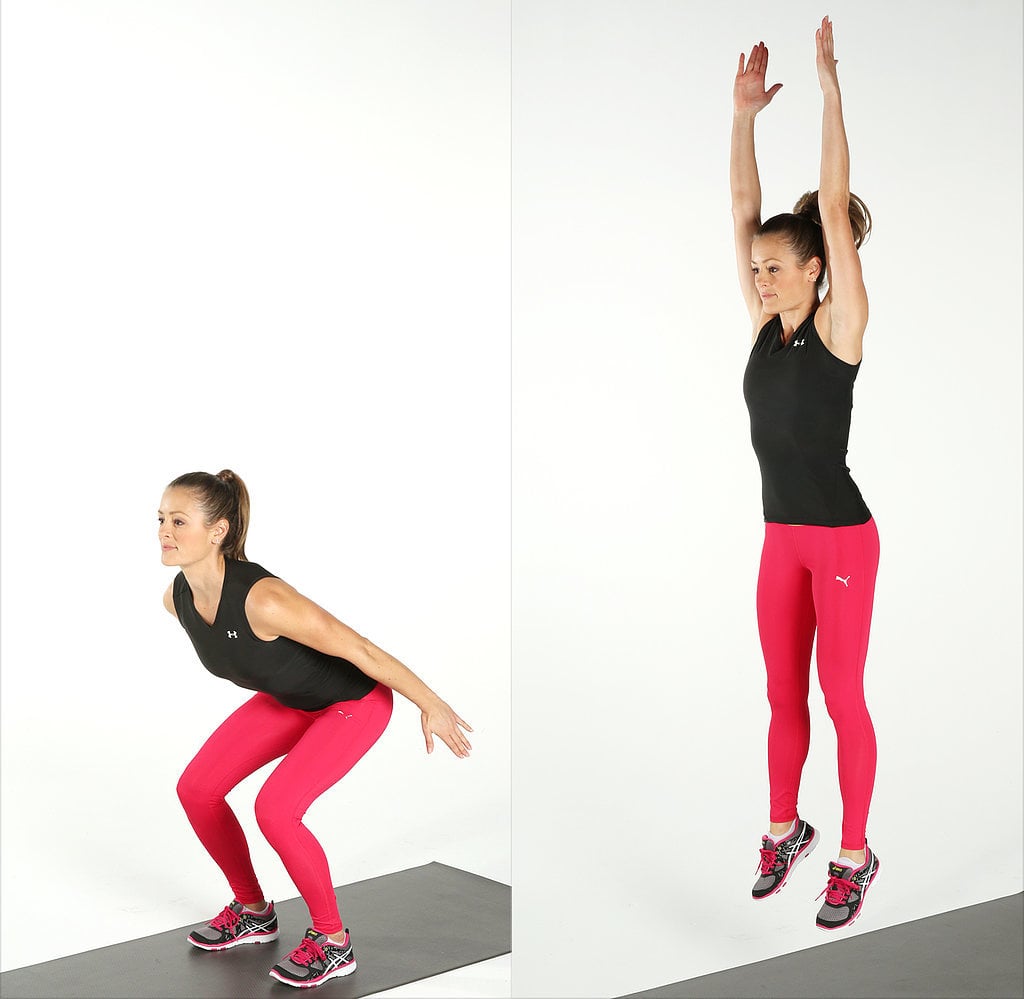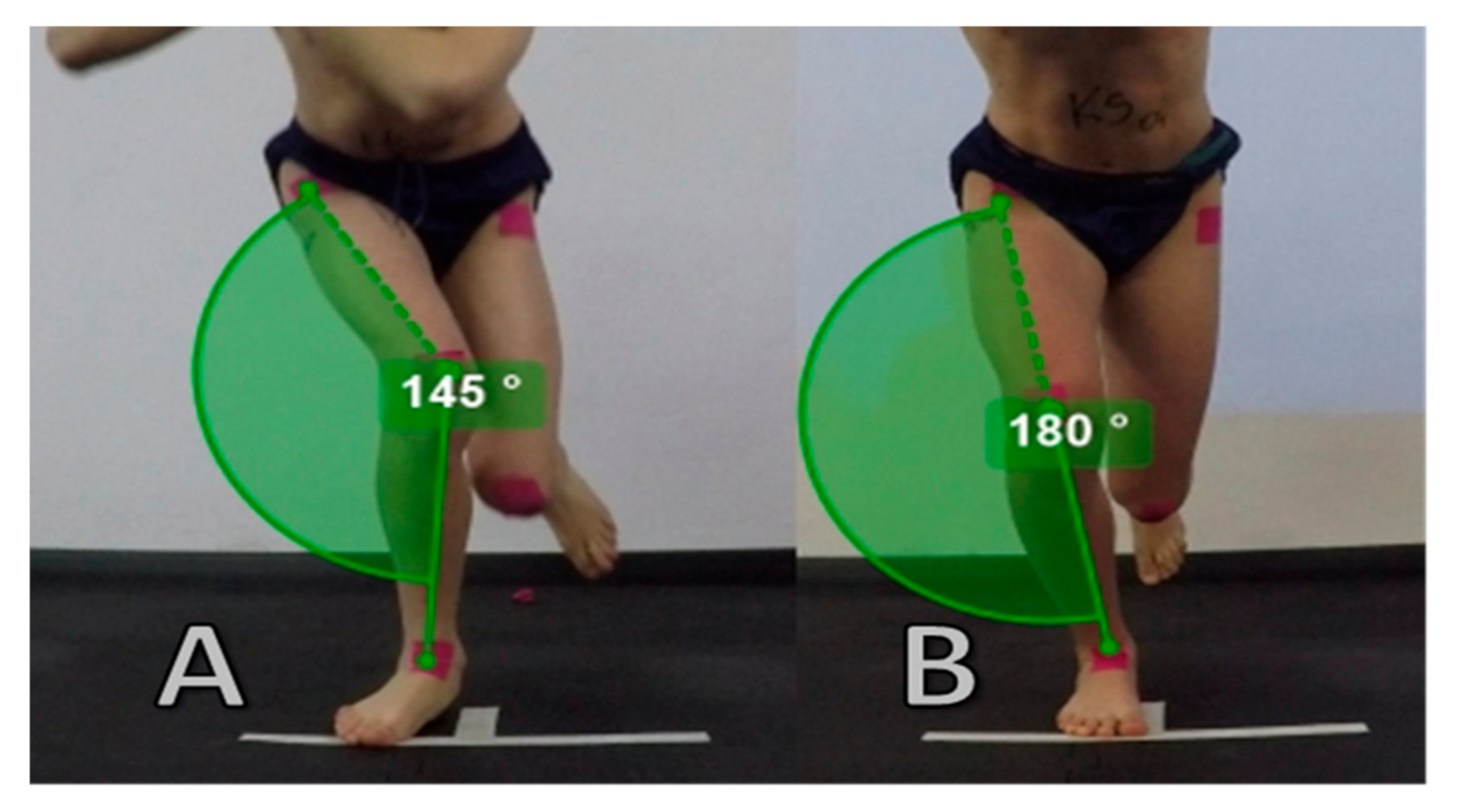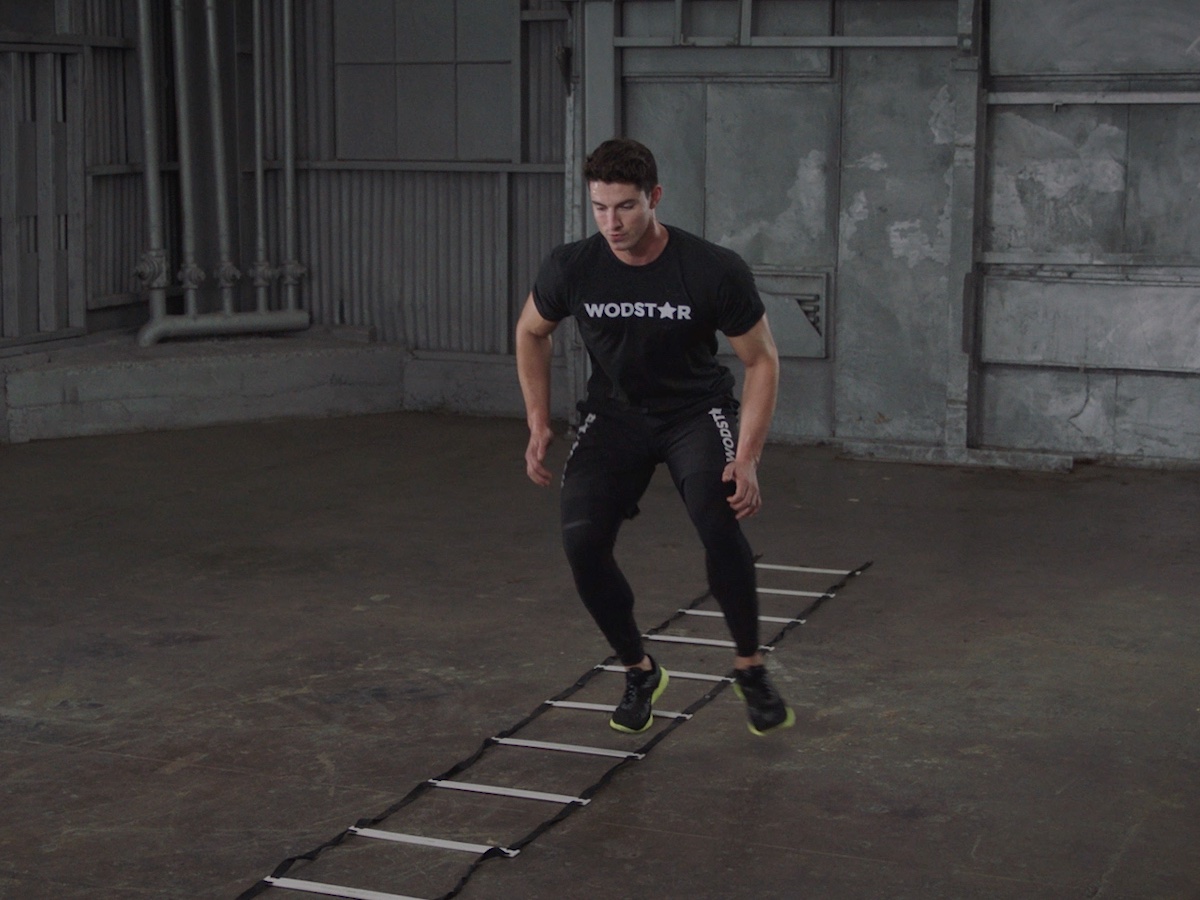
Let’s talk about agility. We’ve all seen it. A gymnast pulling flips and spins, a soccer players starting and stopping on a dime, or a running back weaving their way through a field of opponents. We can recognize agility when we see it, and we know it’s an intrinsic part of most sports and even daily life. But what is agility, and how can you improve it?
Agili-whaaaat? What is Agility?
So, what is agility? If you look in dictionaries, they’ll use phrases like “the ability to move the body quickly and easily”; however, this is a pretty broad and somewhat vague definition that encompasses a lot of activities that aren’t considered agile, such as running. If you look in scientific research, however, you’ll find something more specific and defined: “rapid, whole-body movement with change of velocity or direction in response to a stimulus” (1, 2). In short, being able to react, start, stop, cut and pivot your whole body quickly and efficiently.
This means having the power to do the motion quickly, the coordination and stability to do it efficiently, and the reaction speed to make it happen (7).
I Have the Power! What is Power
So what do I mean when I say “power”? For our purposes, power is the ability to produce force, but more to the point: producing it quickly. The object being moved is your own body, and you’re pushing against the ground.
So how do we train for power? There are two basic components we need to look at here: muscles and nerves. Muscles, obviously, need to be strong enough to make the motion happen. More important, however, is the nervous system: since it controls how much of each muscle and muscle group is contracting at any given time, it needs to be trained to fire more of the muscle faster. Luckily, you can train both of these with one type of exercise: plyometrics, which is a quick, forced eccentric contraction (meaning the muscle is contracting but lengthening (5, 8), like lowering the weight from a biceps curl), followed by a quick concentric motion (the muscle is contracting and shortening, like lifting up during a biceps curl). The easiest example is a squat-jump: start standing, drop quickly into a squat, and then come out of it fast enough to jump in one smooth motion; land and smoothly drop into a squat and repeat.

That’s a basic exercise but mixing in forwards, backwards, side to side, double leg, single leg, alternating legs, lunge jumps and so on give a massive variation of exercises, and that’s just the squat-jump. Additionally, plymetrics also trains full body postural control with those motions (5).
Bonus points: plyometrics requires little or no equipment and can directly translate into sport movements and daily life (8, 9).
Take Control
Okay, so you’ve got the power to move quickly, but how are you moving and where are you moving to? It’s not just enough to be able to move if you’re moving like a robot, missing your foot placement or falling all over the place. This is where body coordination comes into play. Coordination is going to require control over multiple muscles and body segments at the same time. Effectively getting your feet to positions where they will optimally push off the ground to start, stop, turn or change direction means targeting, aligning the body and stabilizing through the motion. Without targeting, the feet won’t be in a good position. Without aligning the body, controlling momentum is more difficult. Without stabilization, you decrease the effectiveness of your muscle power and increase the risk of injury. During direction changes, leaning toward the direction you want to go aligns the body with the direction of force into the ground, instead of losing some momentum to the original direction. Further down, getting good alignment through the hip, knee and foot help protect the joints and even out the load across them; additionally, it brings more muscle into play. The most common loss of leg alignment is seen at the knee: while jumping or landing, does your knee stay lined up with your hips and toes, or does it drop in toward the other leg? This is an important consideration, since dropping in can contribute to ACL and MCL injury.

While there are many methods to train coordination, simple ones include ladder drills, cone drills and shuttle runs. Cone drills are performed with a simple grid of cones, running either a preplanned route from cone to cone or a randomized route. Shuttle runs are performed by simply running between two points, and may be done forward, backwards, laterally and with weaving in the middle or with turns at the ends; this has been found to improved ability during agility tests. Ladders drills provide the largest number of variations, with literally dozens of variations. Another simple way to train for sport is to run the sort of motions you might perform during competition, particularly with small-side games focused more on technique than points (3, 6, 10).

Action and re-action
There’s one last component in our definition of agility up there: “response to a stimulus.” While some things we consider as requiring agility, such as obstacle courses, gymnastics or Parkour, allow for planned out movements and routes, most things we encounter in sport and daily life won’t give us much warning. However, reaction time is one of the more difficult to train, especially on your own. That being said, there are several methods that use low tech solutions. Reaction balls are odd-shaped rubber objects that bounce unpredictably; when thrown against a wall or at the ground, catching them requires a reaction and non-predictable motions, and may require significant postural change and reaching in addition to the leg motion.

Additionally, racquet sports (tennis, racquetball, etc) that can be played against a wall also work for the solo trainee, because each hit will be different than the previous, though more predictable on the return. With a partner, tossing or hitting a ball back and forth can be very effective at improving reactions timing and change of direction ability; additionally, the partner can give a cue for a direction just by gesturing with the hands.
Finally, when it comes to sports a really effective way to train is with by playing small, friendly games where the score doesn’t matter. This allows for enough variation and randomness, but without the added strain of pushing as hard as you can like in an actual competition (3, 6, 7).
Putting it together
As found in most disclaimers: consult with your physician before embarking on an exercise program.
General exercise guidelines for plyometrics recommend 2-3 days per week for non-athlete and low level athletes, with up to 5 days per week for higher level athletes; plyometric strengthening for agility recommendations include anywhere from 40-120 impacts per session, depending on the type and intensity of exercise performed. These training sessions can be performed on their own or as part of another training regimen (either sports practice or general exercise). “Current Concepts of Plyometric Exercise” by Davies et al (4) is a good resource for exercises as well as information about plyometrics in general; it can be found online for free, as can other resources.
Sample workouts:
Plyometrics 2-3 days per week. 3-4 sets for 5-6repetitions each
Day A
– Squat jumps (in place or forward)
– Lateral Single Leg Hops (same leg)
– Tuck Jumps
Day B
– Alternating jumping lunges
– Skier hops (lateral double leg jumps)
– Alternating forward single leg hops
Coordination/stability: 3-5 days per week
-Ladder drills using a 15-20 foot ladder and 1-2 laps per variation, for 10laps total
-Shuttle runs: set 2 cones/items about 30 feet apart. Run back and forth between them, both with turns at each end and by running forwards/backwards
-Figure-8 drills: set 2 cones/items about 6-8 feet apart. Run figure-8saround them forwards, forwards/backwards, and sideways
-Cone drills: 5×5 grid, random direction changes and turns at your own discretion.
Reaction drills: 3-7 days per week. Pick a method, and work at it for 1minute at a time, for a total of 10-20 minutes
References
1. Born DP, Zinner C, Düking P, Sperlich B. Multi-Directional Sprint Training Improves Change-Of-Direction Speed and Reactive Agility in Young Highly Trained Soccer Players. J Sports Sci Med. 2016 May 23;15(2):314-9.
2. Chaalali, A et al. “Agility training in young elite soccer players: promising results compared to change of direction drills.” Biology of sport vol. 33,4 (2016): 345-351.
3. Chaouachi A, Chtara M, Hammami R, Chtara H, Turki O, Castagna C. “Multidirectional sprints and small-sided games training effect on agility and change of direction abilities in youth soccer.” J Strength Cond Res. 2014;28(11):3121-3127.
4. Davies G, Riemann BL, Manske R. CURRENT CONCEPTS OF PLYOMETRIC EXERCISE. Int J Sports Phys Ther. 2015 Nov;10(6):760-86.
5. Jlid MC, Racil G, Coquart J, Paillard T, Bisciotti GN, Chamari K. Multidirectional Plyometric Training: Very Efficient Way to Improve Vertical Jump Performance, Change of Direction Performance and Dynamic Postural Control in Young Soccer Players. Front Physiol. 2019 Dec 9;10:1462.
6. Novák D, Lipinska P, Roczniok R, Spieszny M, Stastny P. Off-Ice Agility Provide Motor Transfer to On-Ice Skating Performance and Agility in Adolescent Ice Hockey Players. J Sports Sci Med. 2019 Nov 19;18(4):680-694. PMID: 31827353; PMCID: PMC6873137.
7. Paul, D. J., Gabbett, T. J., & Nassis, G. P. (2015). Agility in Team Sports: Testing, Training and Factors Affecting Performance. Sports Medicine, 46(3), 421–442.
8. Slimani M, Chamari K, Miarka B, Del Vecchio FB, Chéour F. Effects of Plyometric Training on Physical Fitness in Team Sport Athletes: A Systematic Review. J Hum Kinet. 2016 Oct 14;53:231-247. doi: 10.1515/hukin-2016-0026.
9. Váczi, M., Tollár, J., Meszler, B., Juhász, I., & Karsai, I. (2013). Short-Term High Intensity Plyometric Training Program Improves Strength, Power and Agility in Male Soccer Players. Journal of Human Kinetics, 36(1), 17–26.
10. Young W, Rogers N. “Effects of small-sided game and change-of-direction training on reactive agility and change-of-direction speed.” J Sports Sci. 2014;32(4):307-314.
Brian Marsh, DPT, OCS

This article was written by Dr. Brian Marsh in August of 2021.
Learn more about Brian on his bio page at: https://gopt.co/people/brian-marsh/